In the mattress world, there can be a lot of confusion about box springs, foundations, and when you need (or do not need) them.
This guide is designed to break down the similarities and differences between box spring vs. foundation and help decide which is right for you.
Let’s dive in.
In This Comparison
What is a box spring? | What is a foundation? | When to use box spring or foundation? | Mattress on the floor? | Box Spring vs. Foundation Compared
What is a box spring?
A traditional box spring is a wooden frame, about the same thickness as a mattress, which contains coils that support the mattress above. The support of a box spring helps prevent mattress sagging or uneven support to the mattress above.
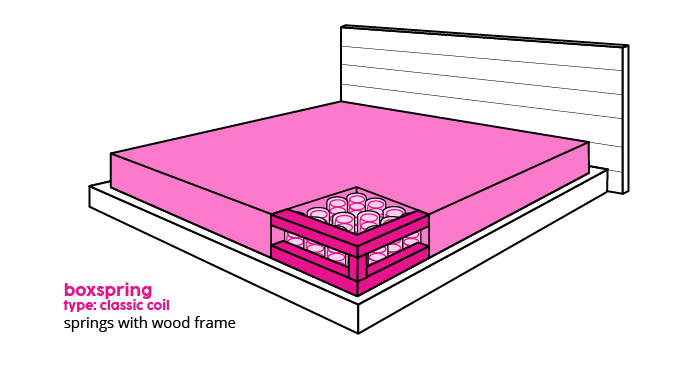
Many people continue to use the term “box spring” for a supportive base that actually contains no springs.
For all intents and purposes, this is incorrect.
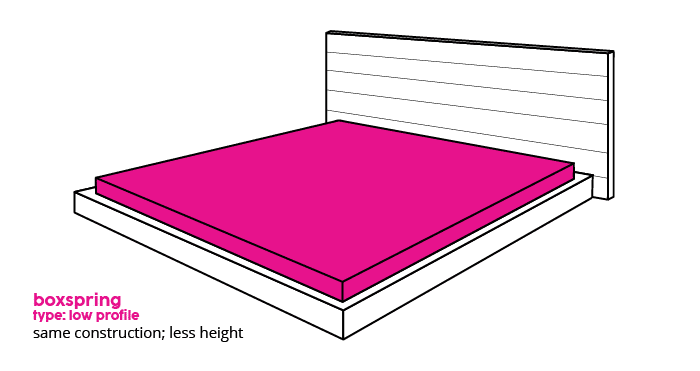
If there are no springs, it is not a box spring. But that doesn’t mean that it doesn’t serve the same purpose as a traditional box spring.
Supportive bases without coils or springs are called foundations.
What is a foundation?
A foundation is a wooden, metal, or composite frame that uses solid wood framing to support the weight of the mattress above. The supports can also be made from metal or composite materials.
What makes a foundation a foundation is it’s rigid and does not contain springs.
In most cases, a foundation is more supportive than a box spring because the support structures are rigid (and typically closer together). This is in contrast to box springs, which have flexible supports.
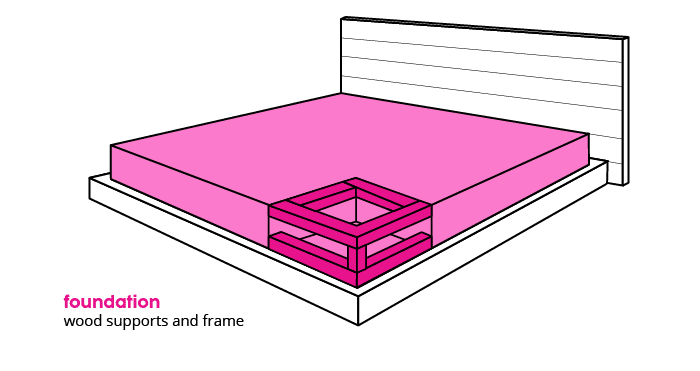
Foundations also have the benefit of coming in different thicknesses. Three of the main types of foundations include the following.
- Full profile foundations: A full profile foundation may range in thickness from 8-12” and is a good option if you want to add height to your bed.
- Low-profile foundations: If you want support, but not the extra height, a low-profile foundation could be a good option. Low-profile foundations have the same wooden box frame, but the total height is shallower—typically 3-7” would be considered low-profile.
- Slat foundation: While it’s not really a true foundation, I’m going to include a third category here called “slat foundations”. This would include wooden products that are virtually flat, but still provide support for the mattress above.

Examples would include the following products:
- Bunkie board
- Roll-out slats (budget)
- Roll-out slats (encased in fabric)
- Rigid slats
- Platform bed frame
Despite the lack of thickness, these products generally still provide sufficient support for the mattress.
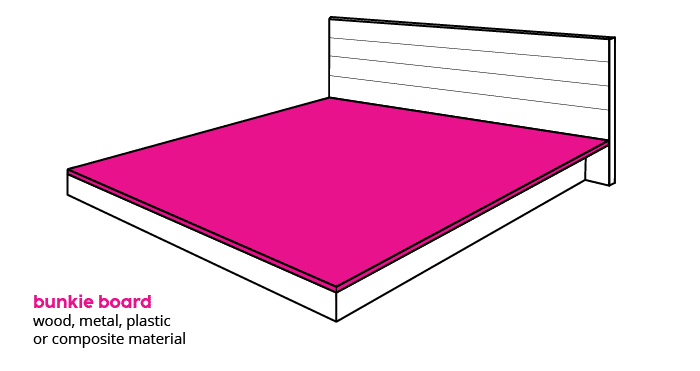
If you don’t want the extra height, any of these slat solutions should get the job done, but also save you some money as well.
When do you need a box spring or foundation?
So we’ve covered the difference between box springs and foundations, but do you need them?
A box spring or foundation is required in a couple of different cases.
- When the manufacturer requires it. Many times a mattress manufacturer will require a certain type of foundation or box spring. Failing to use the correct type is bad for the mattress and can void your warranty. So make sure you know what your mattress requires.
- When your frame requires it. If a bed frame does not have slats or the slats that it does have are spaced too far apart, you may need a box spring or foundation to make sure the mattress is fully supported.
- When you want the extra height. If you simply prefer the aesthetic look or the function of a bed with a taller profile, you may want to consider adding a foundation. This can add anywhere between 3-12” of extra height which may make it easier to get out of bed.
Can you put a mattress on the floor?
So what if you want to save money, don’t want the extra height, and your mattress does not say that it specifically requires a box spring or foundation…can you put the mattress on the floor?
The short answer is yes.

Putting your mattress directly on a solid floor provides even, consistent support to the mattress and helps to eliminate the chance of any sagging.
People who argue against this practice usually do so in the name of two possible disadvantages—hygiene and humidity.
#1. Hygiene
A mattress directly on the floor is exposed to more particulates like dust, dirt, bacteria, insects, and other microscopic floor-dwellers.
To avoid this issue, consider adding a mattress encasement onto the mattress. A mattress encasement is a 6-sided product that zips over your entire mattress and encloses it fully. This helps to keep the mattress clean and fresh for longer.
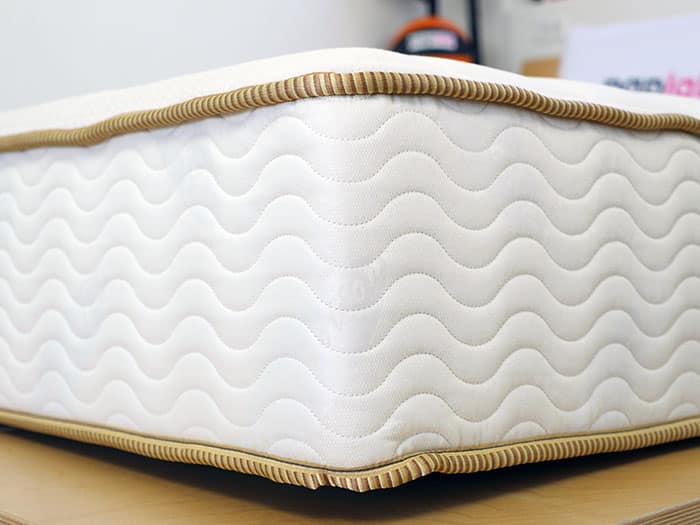
#2. Humidity
If you live in a specifically humid environment, you may also want to reconsider putting your mattress directly on the floor. When a mattress is on the floor, it makes it more difficult for air to circulate around and through the mattress.
In humid environments, that can mean that mold or mildew can collect under your mattress and eventually cause big problems.
Do I need a box spring or foundation?
So all things considered, should you buy a box spring or a foundation—which is right for you?
A box spring is best if:
- The manufacturer specifically requires it.
- You want the extra height.
A foundation is best if:
- The manufacturer specifically requires it.
- You want the extra height.
- You want or need better support.
- You weigh more than 250 pounds.
A low-profile box spring or foundation may be best if:
- You want support, but without the taller profile.
You may be able to skip all of the above if:
- The manufacturer does not require it.
- You have a solid platform bed frame.
- The bed frame has slats that are close together.
- You added another support, like rolled slats, bunkie board, etc.
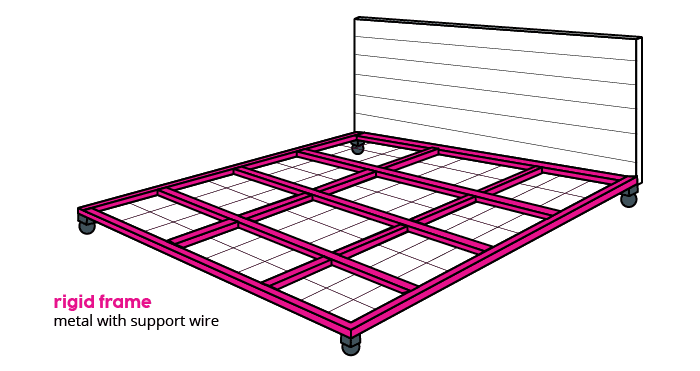
Questions?
Still have questions on what is best for your setup? Drop us a message here and we’ll be happy to help you build the perfect bed for your needs.
FAQs
Both foundations and boxsprings are designed to support a mattress. They are usually made of different materials and at different price points though so they are not identical.
Traditional boxsprings were made of springs. Foundations are usually wooden.
In most cases no. Unless the manufacturer specifically requires the use of a boxspring, a foundation should provide sufficient support for the mattress.
It depends on the kind of foundation you select. Some foundations are designed to sit within a larger bed frame, while others are designed with a platform base to sit directly on the floor.
Traditional box springs tended to be heavy, awkward to move, and expensive to ship. Modern approaches like foldable boxsprings, metal boxsprings, wooden slat systems, bunkie boards, etc, virtually replaced the job of the boxspring in many ways. These alternatives are more economical and take up a much smaller footprint as well.



